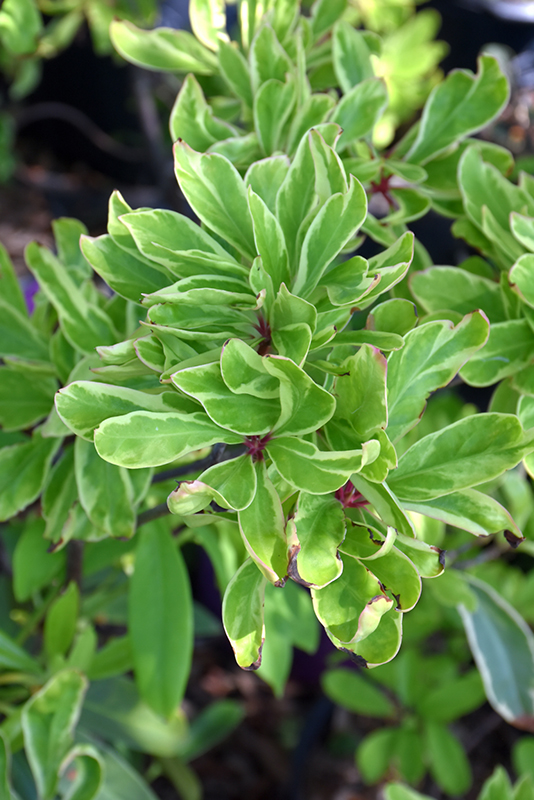Pink Frost Anise Tree
Illicium floridanum 'Pink Frost'
Height: 10 feet
Spread: 10 feet
Sunlight:
![]()
![]()
Hardiness Zone: 5b
Other Names: Starflower
Description:
Wonderful white-variegated evergreen foliage turns pink in cooler fall and winter weather; produces star-shaped seeds similar to the culinary anise, but toxic; spidery red flowers appear in spring; a showy landscape accent plant
Ornamental Features
Pink Frost Anise Tree features showy nodding semi-double red spider-like flowers at the ends of the branches from mid spring to early summer. It has attractive green foliage edged in white. The fragrant narrow leaves are highly ornamental and turn pink in the fall, which persists throughout the winter. It produces brown capsules in mid summer.
Landscape Attributes
Pink Frost Anise Tree is a dense multi-stemmed evergreen shrub with an upright spreading habit of growth. Its average texture blends into the landscape, but can be balanced by one or two finer or coarser trees or shrubs for an effective composition.
This is a relatively low maintenance shrub, and is best pruned in late winter once the threat of extreme cold has passed. It is a good choice for attracting birds to your yard, but is not particularly attractive to deer who tend to leave it alone in favor of tastier treats. It has no significant negative characteristics.
Pink Frost Anise Tree is recommended for the following landscape applications;
- Mass Planting
- Hedges/Screening
- General Garden Use
- Naturalizing And Woodland Gardens
Planting & Growing
Pink Frost Anise Tree will grow to be about 10 feet tall at maturity, with a spread of 10 feet. It tends to fill out right to the ground and therefore doesn't necessarily require facer plants in front, and is suitable for planting under power lines. It grows at a medium rate, and under ideal conditions can be expected to live for approximately 20 years.
This shrub does best in partial shade to shade. It prefers to grow in average to moist conditions, and shouldn't be allowed to dry out. It is particular about its soil conditions, with a strong preference for sandy, acidic soils. It is somewhat tolerant of urban pollution. Consider applying a thick mulch around the root zone over the growing season to conserve soil moisture. This is a selection of a native North American species, and parts of it are known to be toxic to humans and animals, so care should be exercised in planting it around children and pets.


